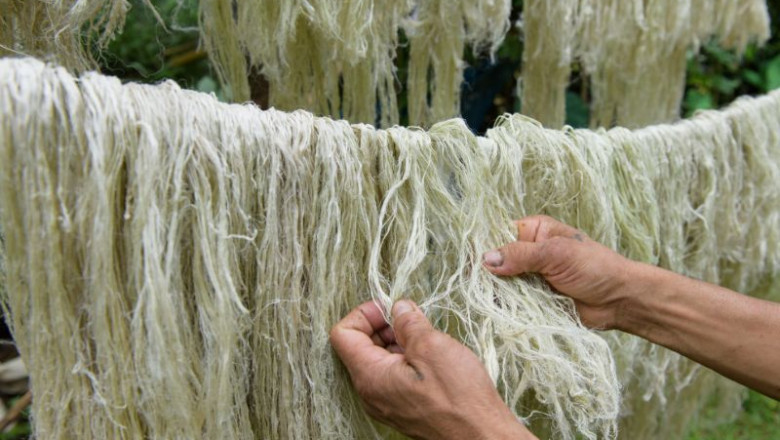views
The global textile industry has been undergoing a transformation, and one of the most significant drivers of this change is the rise of plant-based textile fibres. As the world becomes increasingly aware of the environmental impact of synthetic fibres, such as polyester and nylon, the plant-based textile fibres market is gaining traction as a more sustainable and eco-friendly alternative. With rising consumer demand for ethical, environmentally conscious fashion, the market for plant-based textile fibres is expected to see substantial growth in the coming years.
Sustainable Alternatives for a Greener Future
The primary appeal of plant-based textile fibres lies in their renewable and biodegradable nature. Unlike conventional synthetic fibres, which are petroleum-based and non-biodegradable, plant-based fibres such as cotton, linen, hemp, and bamboo are derived from natural sources and can be broken down in nature without causing long-term harm to the environment. This eco-friendly profile is pushing brands to incorporate these materials into their collections to appeal to the growing base of conscious consumers.
One of the most notable trends in the market is the shift towards plant-based fibres that offer both sustainability and performance. While cotton has long been the dominant plant-based fibre in the textile industry, other fibres like hemp and bamboo are gaining popularity for their environmental benefits. Hemp, for example, is known for its low water usage and ability to grow in a variety of climates, making it an ideal choice for sustainable textile production. Bamboo, on the other hand, is prized for its rapid growth and ability to thrive without the need for pesticides or synthetic fertilizers.
Innovations in Plant-Based Fibres
Innovation is a major theme within the plant-based textile fibres market, with companies developing new, high-performance materials from plant sources. One such innovation is Tencel, a fibre derived from sustainably sourced wood pulp. Tencel is biodegradable, durable, and offers a silky smooth texture that rivals conventional synthetic fibres. The sustainable production process of Tencel further enhances its appeal, as it uses a closed-loop system that recycles water and solvents, minimizing waste.
In addition to Tencel, other innovations include Piñatex, a textile made from pineapple leaf fibres, and Sorona, a bio-based polymer made from renewable plant-based ingredients like corn glucose. These unique fibres are being used in a variety of applications, including fashion, upholstery, and automotive interiors, showcasing the versatility and potential of plant-based alternatives.
Consumer Demand for Eco-Conscious Fashion
Consumers are increasingly aware of the impact their purchases have on the environment, and many are actively seeking out sustainable fashion brands. This growing consumer demand for eco-conscious products is encouraging brands to explore plant-based textiles as a way to differentiate themselves in a competitive market. Plant-based fibres are now being used in everything from casual wear to high-end fashion collections, with major brands like Stella McCartney and Patagonia leading the charge.
The rise of plant-based textiles is also being driven by changing consumer values. Today’s shoppers are more informed and conscientious about their environmental footprint, and they are willing to pay a premium for products that align with their values. This has led to a boom in plant-based textiles, as brands rush to meet the demand for sustainable options. Furthermore, as the technology behind plant-based fibres continues to improve, these materials are becoming more affordable and accessible to brands of all sizes, further fueling market growth.
The Road Ahead: Challenges and Opportunities
While the plant-based textile fibres market holds immense promise, there are challenges that must be addressed to ensure its continued growth. One of the main obstacles is the need for scaling up production to meet growing demand. Plant-based fibres often require more land and resources to cultivate compared to synthetic fibres, which can make them more expensive and less efficient to produce on a large scale.
However, advances in agricultural practices and supply chain innovations are helping to mitigate these challenges. For instance, vertical farming methods and sustainable farming practices are being explored to improve the efficiency of fibre production. Additionally, research is underway to find new plant-based sources that can be used to produce textiles, further expanding the range of options available.
Despite these challenges, the plant-based textile fibres market is poised for significant growth, with increasing investment in sustainable technologies and consumer interest in eco-friendly products. As the fashion industry continues to evolve, plant-based textiles are set to play an integral role in shaping a more sustainable and ethical future for the industry.






















Comments
0 comment